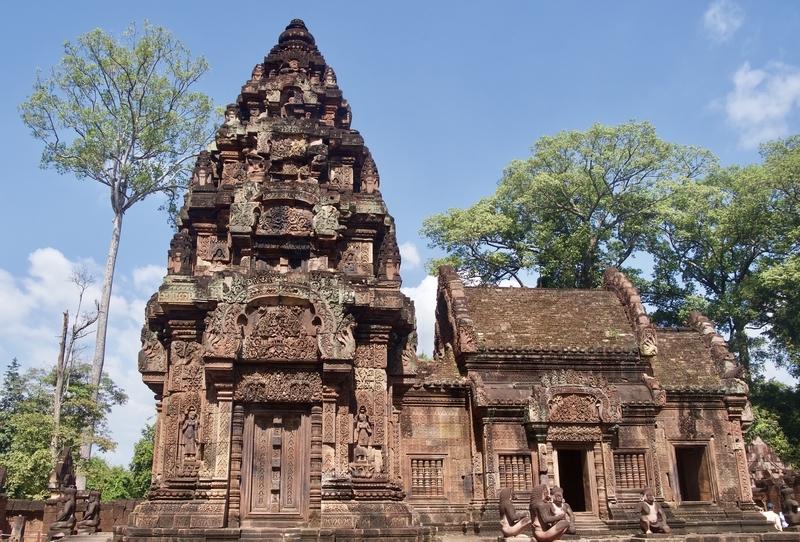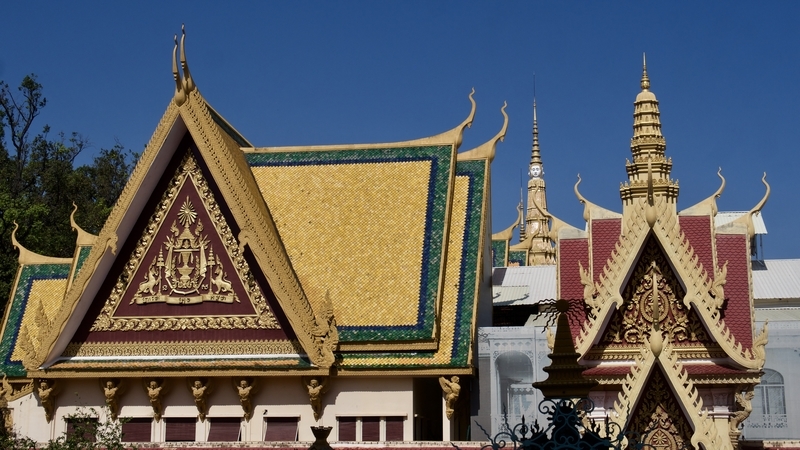
One Day in Phnom Penh: Dark Tourism in the Pearl of Asia
Cambodia is a small, landlocked country with a rich heritage and a dark past. Both home to one of the world’s greatest civilizations and one of the 20th century’s greatest tragedies, the country’s history is at once proud, multi-layered, complex and heartbreaking.
In Cambodia’s capital, Phnom Penh, the country’s rich heritage and tragic past collide. The city can be an assault on the senses, like a mellower version of Bangkok. With gleaming golden temples and lush vegetation lining its frenetic streets, it is vibrant and intoxicating. In Phnom Penh, motorbikes whiz through narrow streets; crowds of people stroll along the banks of the Mekong; flowering trees line ramshackle laneways, tangled in a web of telephone wires.
Yet residing alongside its glimmering golden palaces and riverside promenades, Phnom Penh houses some of the world’s most horrific displays of human nature at its darkest. What struck me most during my visit to Cambodia’s capital city, is the way in which the city’s past and present– the former ravaged and grieving, the latter jovial and hopeful–can live side by side.
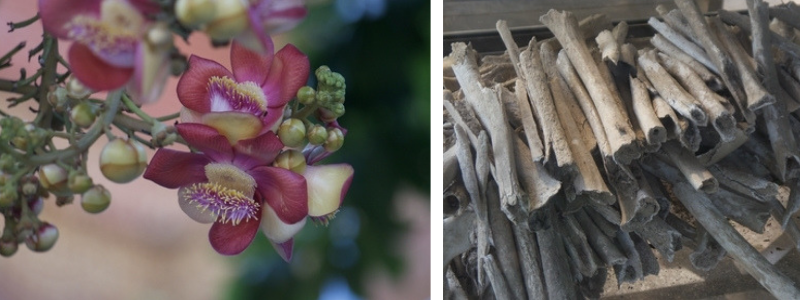
ONE DAY PHNOM PENH ITINERARY
With just one day in Phnom Penh, we spent our morning wandering the city’s leafy promenades, peaking into its gold-gilded temples and soaking in the frenzied bustle of its lively streets.
We stayed at the Palm Tree Boutique Hotel for two nights during our stay in Phnom Pehn. The hotel, located within walking distance of the main sites downtown, was a clean, quiet and peaceful retreat.
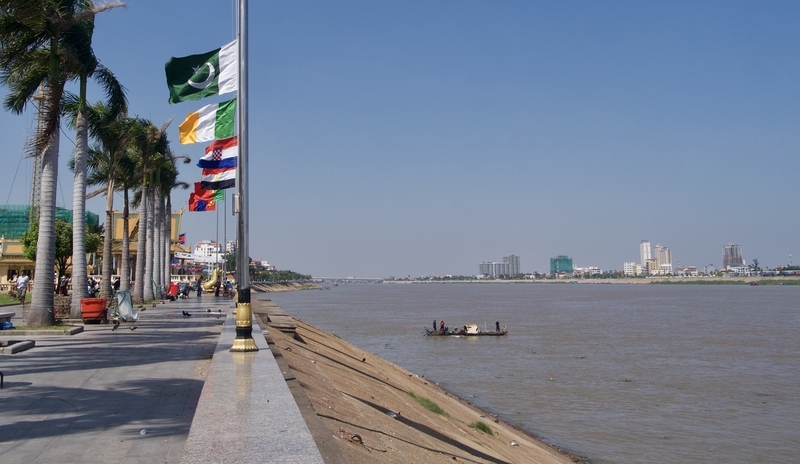
Spending only one day in Phnom Penh, meant we had limited time to visit the city’s must-see attractions. Our first stop was Phnom Penh’s royal compound, located in the heart of the city. Following a tour of the city’s architectural highlights, we delved into its dark and tragic past.
-
THE ROYAL PALACE OF PHNOM PENH
The Royal Palace is the lavish residence of Cambodia’s king. With slanted roofs and shimmering gold spires, it reminded me in many ways of Bangkok’s Royal Palace.
The site’s ten dollar entrance fee includes a visit to the adjacent Temple of the Silver Pagoda. Also known as the Temple of the Emerald Buddha, the Temple of the Silver Pagoda is famous for its glistening silver-gilded floor. The floor today is mostly concealed by carpets and, thus, rarely visible to visitors.
Khmer art lines the walls of the royal residences and reveals Cambodia’s rich artistic heritage.
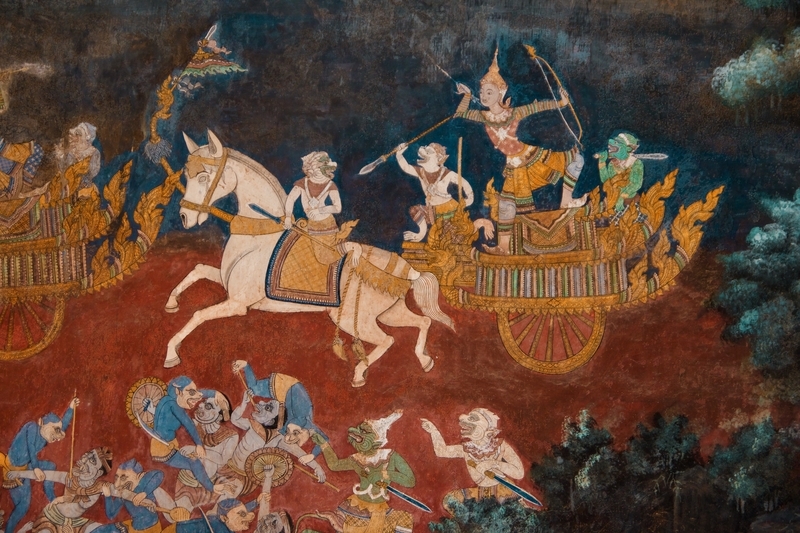
After a packed morning of visiting the temples and shrines of downtown Phnom Penh, we decided to hire a tuk tuk driver that would take us to the Killing Fields of Cheoung Ek–an extermination site used during the times of the Khmer Rouge.
-
THE KILLING FIELDS OF CHEOUNG EK
The Khmer Rouge ruled Cambodia from April 17, 1975, until January 1979. The party’s aim was to establish a classless communist country based on the rejection of capitalism and the establishment of an agrarian state. In attempting to create its utopian communist state, the army employed violent measures that resulted in the deaths of millions.
At the Killing Fields of Cheoung Ek, the remains of nearly 9,000 people were dumped into mass graves. About a third of the communal graves at Cheoung Ek have been left untouched. Fragments of human bone and remnants of clothing are scattered around the exhumed pits.
In a glass memorial tower on site, more than 8,000 skulls are arranged by sex, age and cause of death. It is a powerful display of Cambodia’s devastating loss of human life in the 1970s.
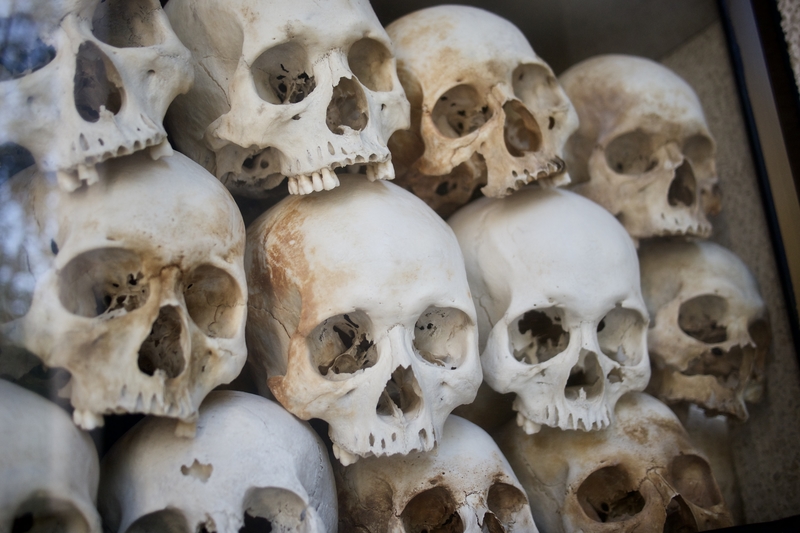
Visiting Cheoung Ek is chilling to the bone. As we listened to the audio guide that directed us around the execution site, we heard stories of survivors, of people who had narrowly escaped death and of those who lost everything and everyone during the times of the Khmer Rouge.
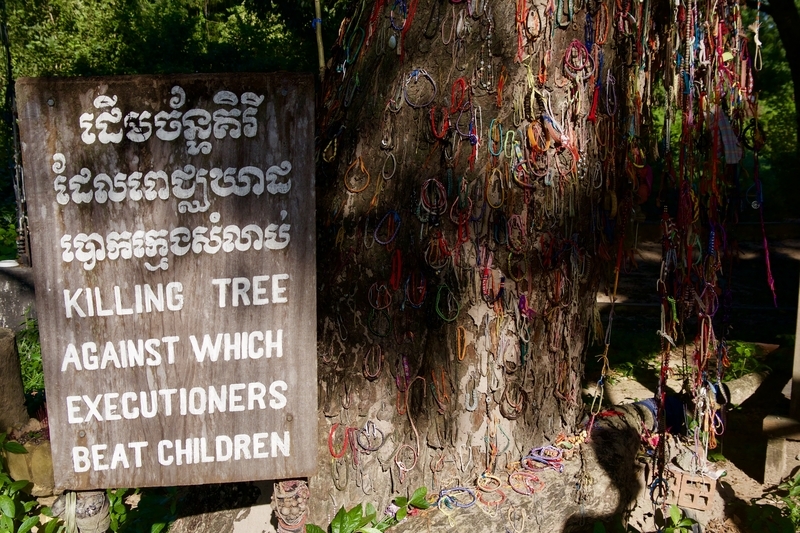
First they Killed my Father is terrifying memoir about life under Pol Pot’s regime. I first learned about the book when traveling to Cambodia, and read it following my return to the United States. The book–a poignant look at the brutal regime through the eyes of a young girl– is an essential book to read while traveling to Cambodia.
-
THE S-21 PRISON IN PHNOM PENH
From the Killing Fields, our tuk tuk driver brought us to the S-21 Prison–a converted high school located in the outskirts of Phnom Penh. Between 1975 and 1978, approximately 17,000 men, women and children were detained and tortured at S-21, before being transported to the extermination camp of Choeung Ek.
Today, S-21 is known as the Tuol Sleng Museum of Genocide. Once known as Svay Pray High School, the ex-prison is an oddly serene and peaceful place, where visitors can learn of the horrors that unfolded here decades ago. Inside its gates, S-21 looks like any high school–complete with courtyard-facing classrooms, monkey bars and leafy trees.
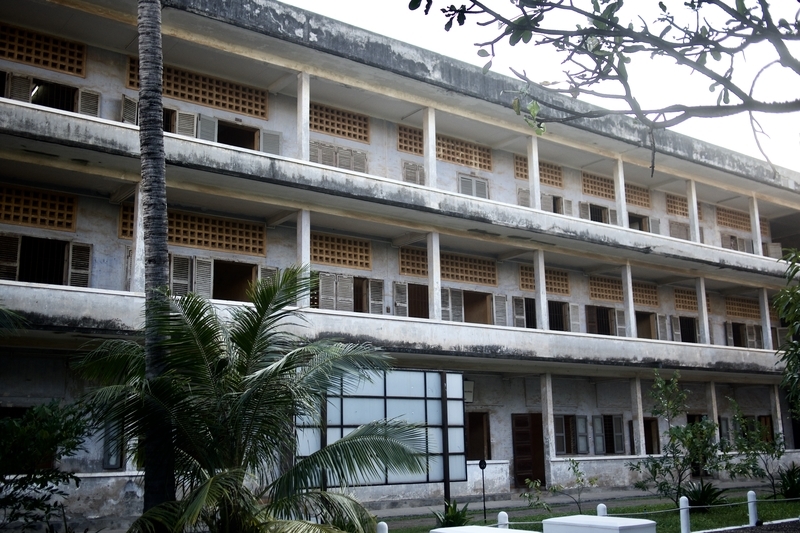
A visit to the S-21 Prison allows tourists access to interrogation rooms and prison cells. The spartan interrogation rooms are furnished with only a school desk and a steel bed frame with shackles at each end.
As with the Killing Fields, entrance to S-21 includes an audioguide that is loaded with powerful testimonies from survivors.
Lining the walls, are the stories and faces of those who perished.
Of the 14,000 people known to have entered the S-21 prison, only seven survived.
DARK TOURISM IN CAMBODIA: IS IT ETHICAL?
In college, I took a course called Anthropology of Tourism. In the course, we debated the ethics of visiting centers of torture and extermination. Is it ethical to participate in dark tourism? Is it wrong to commodify these places–places that have elicited such horror and trauma–and package them for the curious tourist? It is a tricky question, but I think the answer lies in intent. And perhaps, before visiting, we should ask ourselves an important question: are we traveling to these places to heighten our understanding, or are we simply hoping to scratch them off our bucket lists?
Visiting the Holocaust Museum, the Armenian Genocide Museum and the Killing Fields can be powerful in helping us make sense of unfathomable events from the past, as well as events–perhaps not so dissimilar–that are taking place today (think: Isis, the modern-day slave trade in Libya, the famines in North Korea).
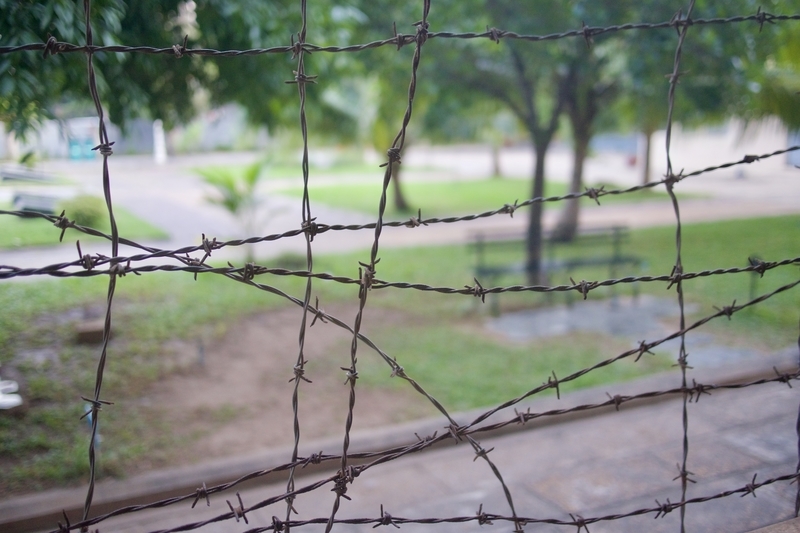
Today, around the world, we see countries struggling with a fate similar to that of Cambodia in the 1970s. How will these countries emerge from such dark times? How will their citizens slowly begin the process of healing? How will the world remember those who have perished?
Visiting sites of terror and death cannot solve future conflicts in and of itself. But if the intent is to understand–to truly understand how ordinary people can be capable of committing such extraordinary crimes–then perhaps we can give humanity to those caught up in the turmoil. It is important to remember history as it happened. Because when we forget the consequences of war and negate the humanity of those who perished, we create an environment that is ripe for repeating.
***
Further Reading:
- After our day in Phnom Penh, we traveled to Siem Reap in order visit one of humankind’s greatest achievements–the incredible temples of Angkor Wat.
